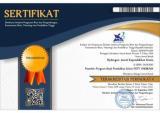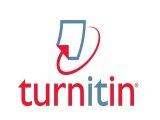Validity of Structured Assignment Sheet to Train Argumentation Skills on Buffer Solution
Abstract
The purpose of this study was to produce structured task sheets to practice argumentation skills on buffer solution material. This research is a development research to produce products with the ADDIE development model which is limited to the design and development analysis stage. The developed structured assignment sheet contains enriched questions to practice argumentation skills on buffer solution material. The data obtained in this study is the feasibility of the validity aspect. The instruments used to obtain content and construct validity data were validation sheets assessed by three validators. Learning devices are declared to meet the validity criteria (based on content and construct) if they get a minimum rating mode (Mo) of 4 (valid) from the range 1 to 5 on a Likert scale. The results showed that according to the assessment component, both content and construct validity got an assessment mode (Mo) of 5 (very valid). The developed structured task sheets are declared valid to train argumentation skills.
Keywords
Full Text:
PDFReferences
Afni, A. N., & Suyono. (2021). Kelayakan Lembar Penugasan Terstruktur pada Materi Laju Reaksi untuk Melatihkan Literasi Sains. PENDIPA Journal of Science Education, 6(1), 16–25.
Branch, R. M. (2009). Instructional Design: The ADDIE Approach. Springer.
Cahyadi, R. A. H. (2019). Pengembangan Bahan Ajar Berbasis Addie Model. Halaqa: Islamic Education Journal, 3(1), 35–42. https://doi.org/10.21070/halaqa.v3i1.2124
Cronbach, L. J., & Paul, E. M. (1995). Construct Validity in Psychological Tests. Psychological Bulletin, 52, 281–302.
Damayanti, M. (2016). Pengaruh Pemberian Tugas Terstruktur dengan Umpan Balik Individual Terhadap Hasil Belajar Siswa. Saintifik, 2(1), 46–53.
Demircioglu, T., Karakus, M., & Ucar, S. (2022). Developing Students’ Critical Thinking Skills and Argumentation Abilities Through Augmented Reality–Based Argumentation Activities in Science Classes. In Science and Education (Issue 0123456789). https://doi.org/10.1007/s11191-022-00369-5
Devi, N. D. C., Susanti VH, E., & Indriyanti, N. Y. (2018). Analysis of High School Students’ Argumentation Ability in the topic of Buffer Solution. JKPK (Jurnal Kimia Dan Pendidikan Kimia), 3(3), 141. https://doi.org/10.20961/jkpk.v3i3.23308
Ennis, R. H. (. (2011). The nature of critical thinking: An outline of critical thinking dispositions and abilities. . Illinois College of Education.
Firdaus, M., Rusman, R., & Zulfadli, Z. (2021). Analysis of Students’learning Difficulties on the Concept of Buffer Solution Using Four-Tier Multiple Choice Diagnostic Test. Chimica Didactica Acta, 9(2), 57–61.
Gunawan, G. S., Hagijanto, A. G., & Pratama, R. (2014). Pengaruh Sampul Depan Novel Teenlit terhadap Minat Beli Masyarakat. Jurnal DKV Adiwarna, 1(4).
Hardini, S. D., & Alberida, H. (2022). Analisis Kemampuan Argumentasi Peserta Didik. Biodidaktika: Jurnal Biologi Dan Pembelajarannya, 17(1).
Hidayati, K., C. (2004). Validitas Konstruk (Construct Validity) dalam Pengembangan Instrumen Penilaian Non-Kognitif. Jurusan Pendidikan Matematika FMIPA, Universitas Negeri Yogyakarta.
Kivunja, C. (2015). Exploring the Pedagogical Meaning and Implications of the 4Cs “Super Skills” for the 21<sup>st</sup> Century through Bruner’s 5E Lenses of Knowledge Construction to Improve Pedagogies of the New Learning Paradigm. Creative Education, 06(02), 224–239. https://doi.org/10.4236/ce.2015.62021
Kundi, S. (2013). ). Pengaruh Penggunaan Lembar Kegiatan Peserta didik Terstruktur terhadap Hasil Belajar Fisika Peserta didik Kelas XI IPA SMA Negeri 1 POL-UT Kabupaten Takalar. Jurnal Pendidikan Fisika Unismuh, 1(3), 219–225.
Lazarou, D. (2009). Learning to TAP: An Effort to Scaffold Students Argumentation in Science. Bristol: University of Bristol.
Lutfi, A. (2021). Research and Development (R&D): Implikasi dalam Pendidikan Kimia. Jurusan Kimia FMIPA Universitas Negeri Surabaya.
Mardhiyah, R. H., Aldriani, S. N. F., Chitta, F., & Zulfikar, M. R. (2021). Pentingnya Keterampilan Belajar di Abad 21 sebagai Tuntutan dalam Pengembangan Sumber Daya Manusia. Lectura: Jurnal Pendidikan, 12(1), 29-37.
Najamuddin, M. N. (2022). Penerapan Teknik Role Playing Terhadap Keterampilan Komunikasi Interpersonal Siswa. Realita: Jurnal Bimbingan Dan Konseling, 7(1), 1577–1582.
Newman, I., Lim, J., & Pineda, F. (2013). Content validity using a mixed methods approach: Its application and development through the use of a table of specifications methodology. Journal of Mixed Methods Research, 7(3), 243-260.
Nieveen, N. (2010). Formative Evaluation in Educational Design Research. An Introduction to Educational Design Research. Proceedings of the Seminar Conducted at Shanghai (PR China).
Novayani, S., Nufida, B. A., & Mashami, R. A. (2016). Pengaruh model discovery learning terhadap keterampilan berpikir kritis siswa SMP pada materi pencemaran lingkungan. Hydrogen: Jurnal Kependidikan Kimia, 3(1), 253–258.
Nurhujaimah, R., Kartika, I. R., & Nurjaydi, M. (2016). Analisis miskonsepsi peserta didik kelas XI SMA pada larutan penyangga menggunakan instrumen tes three tier multiple choice. Paedagogia, 19(1), 15–28.
Osborne, J. F. (2011). Arguing to learn in Science: The Role of Collaborative, Critical Discourse. Science, 328, 463–466.
Osborne, J. F., Henderson, B., MacPherson, A., Szu, E., Wild, A., & Yao, S. (2015). The Develpoment and Validation of a Learning Progression for Argumentation in Science. Journal of Research in Science Teaching, 1–26.
Partnership for 21 st Century Skills. (2015). Partnership for 21St Century Skills-Core Content Integration. Ohio Department of Education, 1–70. www.P21.org.
Rahayu, M., Kurniati, T., & Yusup, I. R. (2018). Keterampilan Agrumentasi pada Pembelajaran Materi Sistem Respirasi Manusia Melalui Penerapan Model Pembelajaran Thinking Talk Write. Jurnal Bio Educatio, 3(2), 50–58.
Rubio, D. M., Berg-Weger, M., Tebb, S. S., Lee, E. S., & Rauch, A. S. (2003). Objectifying Content Validity: Conducting A Content Validity Study In Social Work Research. Social Work Research, 27(2), 94–104.
Sadjati, I. M. (2012). Modul Ajar Pengembangan Bahan Ajar. Universitas Terbuka.
Salame, I. I., Ramirez, L., Nikolic, D., & Krauss, D. (2022). Investigating Students’ Difficulties and Approaches to Solving Buffer Related Problems. International Journal of Instruction, 15(1), 911-926.
Septikasari, R., & Frasandy, R. N. (2018). Keterampilan 4c Abad 21 Dalam Pembelajaran Pendidikan Dasar. Jurnal Tarbiyah Al-Awlad, 8(2).
Sudarmo, N. A., Lesmono A. D., & Harijanto, A. (2018). Analisis kemampuan berargumentasi ilmiah peserta didik SMA pada konsep termodinamika. Jurnal Pembelajaran Fisika, 7(2), 196–201.
Sumarni, E. M., Widodo, A., & Solihat, R. (2017). Stimulating Students’ Argumentation using Drawing based Modeling on The Concept of Ecosystem. International Journal of Science and Applied Science: Conference Series, 2(1), 98–104.
Suryati, & Hatimah, H. (2015). Pengembangan Perangkat Pembelajaranberbasis Pendekatan Pembelajaran Inkuiri Terbimbing Untuk Memberdayakan Kemampuan Berpikir Kritis Kimia Siswa. Hydrogen: Jurnal Ilmiah Pendidikan Kimia, 3(1), 253–258.
Toulmin, S. (2004). The Uses of Argument. Cambridge University Press.
Trilling, B., & Fadel, C. (2009). Bernie Trilling, Charles Fadel-21st Century Skills_ Learning for Life in Our Times -Jossey-Bass (2009). Journal of Sustainable Development Education and Research, 2(1), 243.
Yildirim, B., & Turk, C. (2018). The effectiveness of argumentation-assisted STEM practice. Cypriot Journal of Education Science, 13(3), 259–274.
Zohar, A., & Nemet, F. (2002). Fostering students’ knowledge and argumentation skills through dilemmas in human genetics. Journal of Research in Science Teaching: The Official Journal of the National Association for Research in Science Teaching, 39(1), 35–62.
DOI: https://doi.org/10.33394/hjkk.v11i4.8610
Refbacks
- There are currently no refbacks.

This work is licensed under a Creative Commons Attribution-ShareAlike 4.0 International License.





